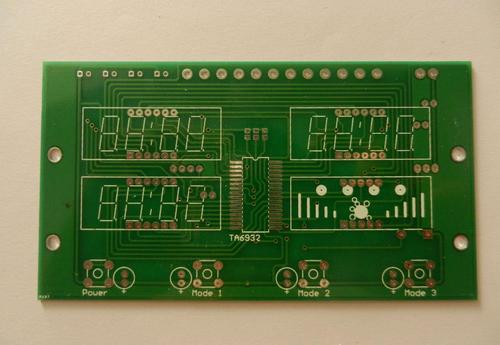 +86 755 2794 4155
+86 755 2794 4155  sales@knownpcb.com
sales@knownpcb.com
-
Shenzhen KNOWNPCB Technology Co., Ltd.
 +86 755 2794 4155
+86 755 2794 4155  sales@knownpcb.com
sales@knownpcb.com
 2024-11-16
2024-11-16
 576
576

Printed Circuit Boards (PCBs) are essential components in electronic devices, and anti - oxidation treatment of PCBs is of great significance to ensure their long - term performance and reliability.
The main purpose of PCB anti - oxidation treatment is to prevent the copper surfaces on the PCB from oxidizing. Copper is widely used in PCBs for its excellent electrical conductivity. However, copper is highly susceptible to oxidation when exposed to air, moisture, and other environmental factors. Oxidation of copper can form copper oxide or other copper compounds, which can increase the resistance of the circuit, degrade the electrical performance of the PCB, and even lead to potential failure of the entire electronic system.
There are several common methods for PCB anti - oxidation treatment. One of the most widely used techniques is the application of anti - oxidation coatings. These coatings can be organic or inorganic materials. Organic coatings usually contain polymers with certain functional groups that can form a protective layer on the copper surface. They can effectively block the contact between copper and oxygen in the air. Inorganic coatings, such as metal - based coatings, can also provide good anti - oxidation protection. For example, some metal oxides or metal salts can be deposited on the copper surface through chemical or physical methods.
Another important aspect of anti - oxidation treatment is the control of the PCB manufacturing environment. Maintaining a low - humidity environment during the production process can reduce the chance of copper oxidation. Additionally, proper storage conditions for PCBs are crucial. PCBs should be stored in a dry, cool, and oxygen - free environment as much as possible. Packaging materials with good barrier properties can be used to protect the PCBs during storage and transportation.
Quality control during anti - oxidation treatment is also essential. Inspection methods such as visual inspection, electrical performance testing, and chemical analysis can be used to ensure the effectiveness of the anti - oxidation treatment. Visual inspection can check for any visible signs of oxidation or coating defects. Electrical performance testing can measure the resistance and other electrical parameters of the PCB to verify if the anti - oxidation treatment has maintained the desired electrical performance. Chemical analysis can determine the composition and thickness of the anti - oxidation coating to ensure it meets the required standards. proper PCB anti - oxidation treatment is a key step in the production of high - quality PCBs for reliable electronic systems.

Or call +86 755 2794 4155
Inquiry Now

